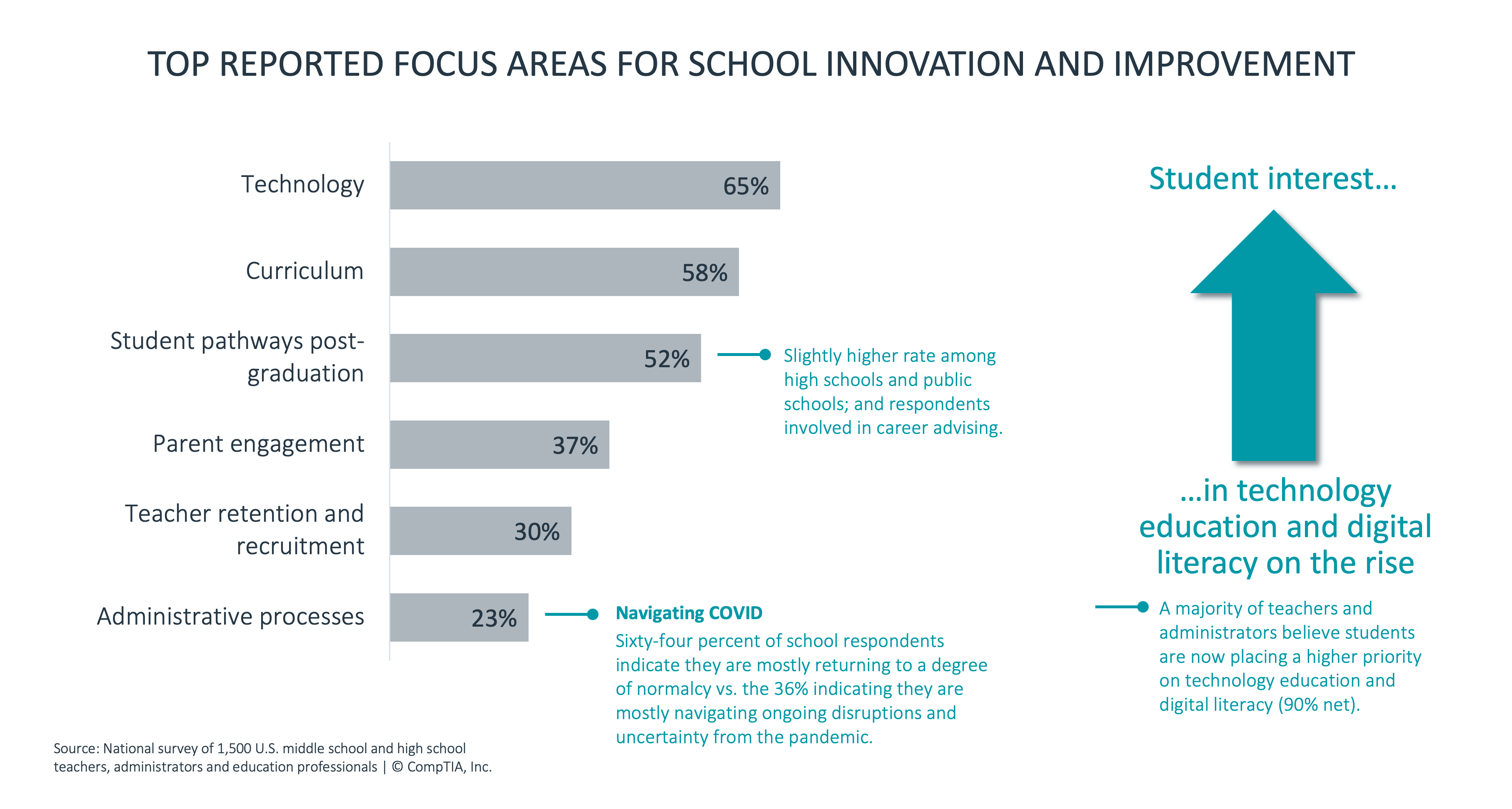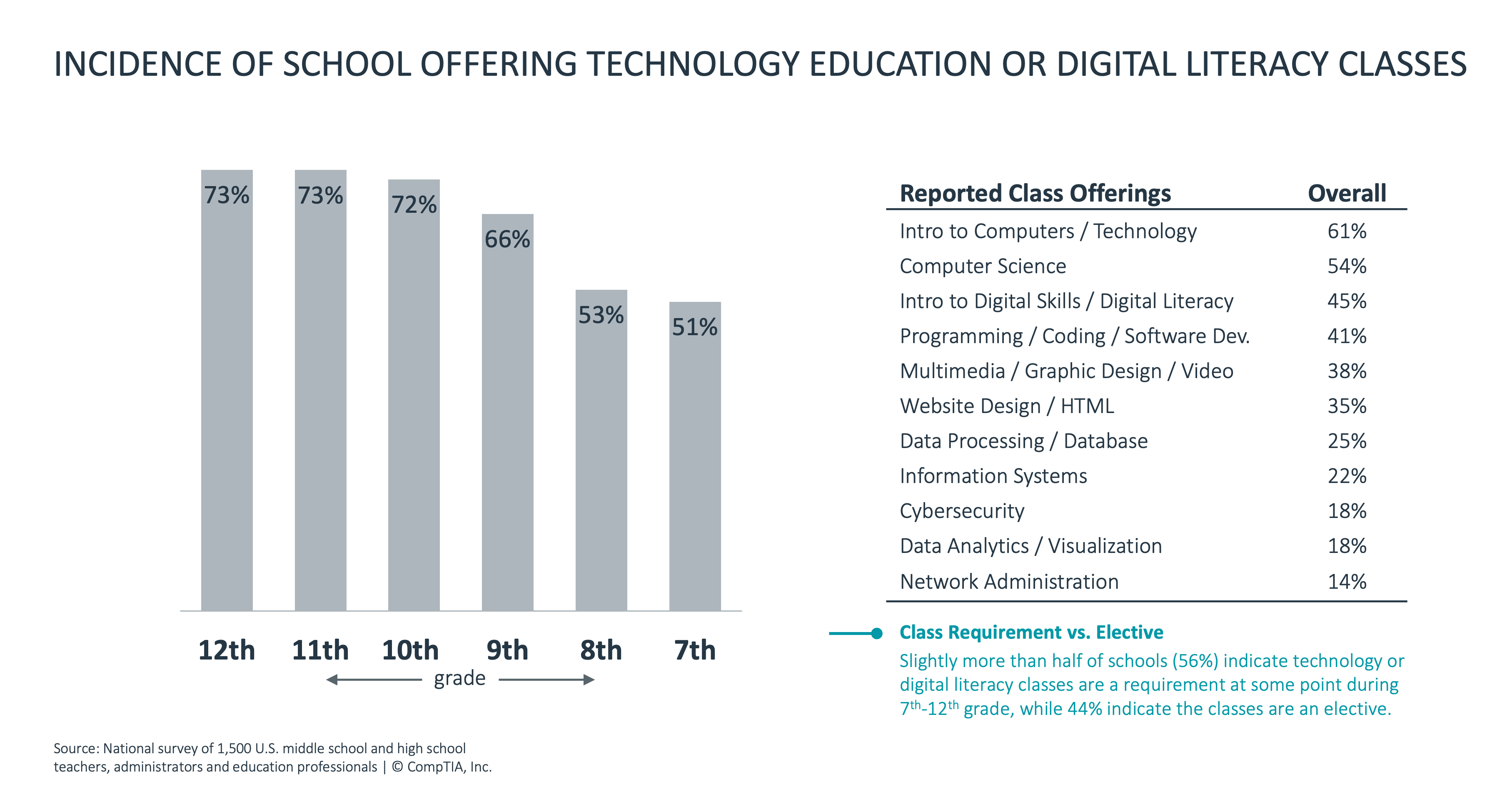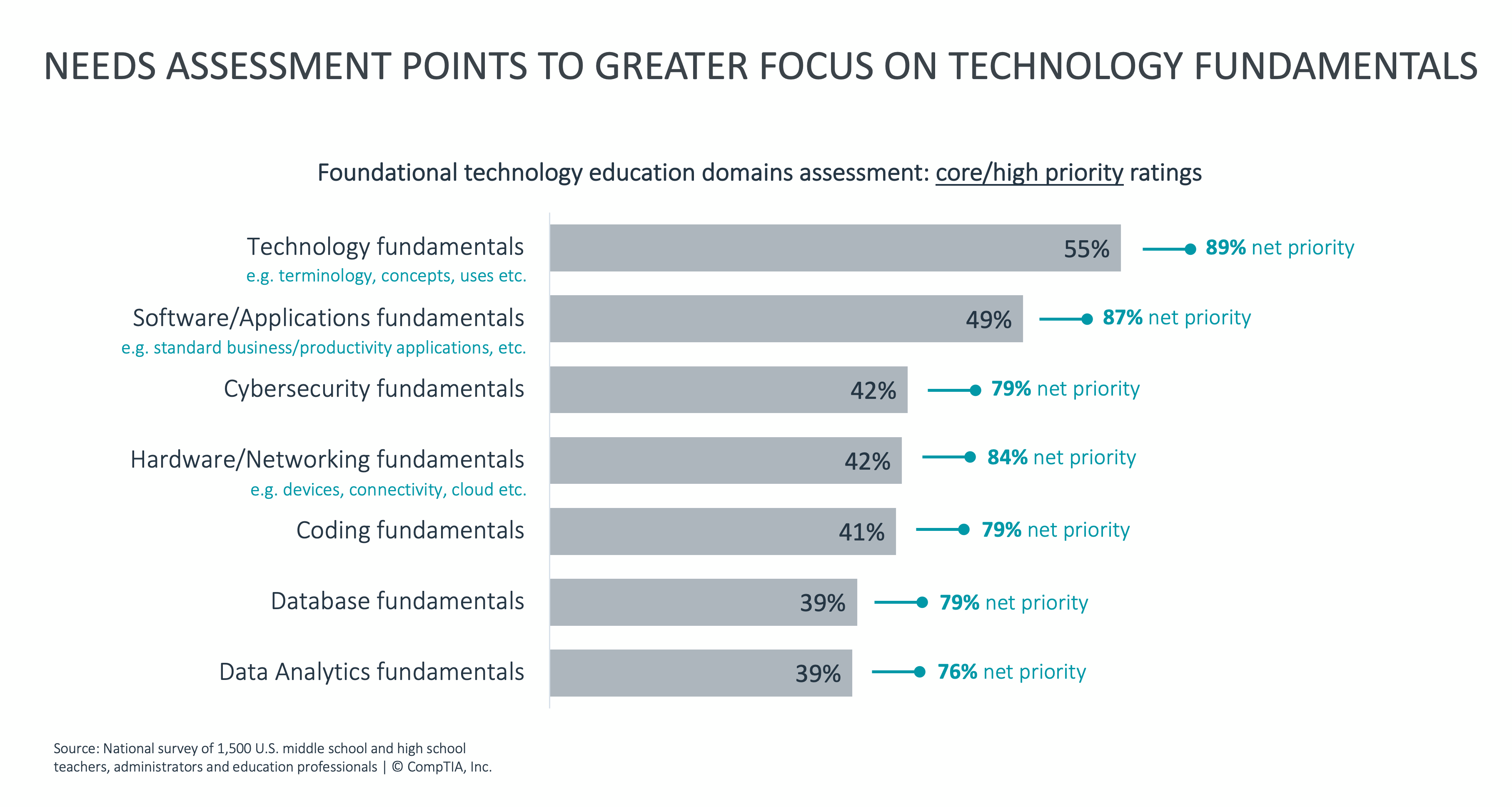CompTIA’s Technology and Digital Literacy Education Trends summarizes the key findings of a national survey of 1,500 U.S. middle school and high school teachers, administrators and education professionals. The research confirms the growing importance of preparing young people for an ever-changing digital future. While there are positive signs of schools on the right path, the data does reveal areas for improvement in the positioning and delivery of technology and digital literacy education.

The majority of U.S. high schools now offer some type of technology or digital literacy classes. Incidence rates are similar between public and private schools, although offerings do skew slightly towards larger high schools with more than 1,000 students.

Approximately two-thirds of teachers, administrators and education professionals believe their school’s technology and digital literacy program generally meets expectations, with the remaining indicating it does not meet expectations. However, the data does reveal several disconnects whereby expectations may need to be reset to better align with best-in-class approaches to technology and digital literacy education.
Teachers and administrators share a similar assessment of areas to target for improvement. As noted in the table below, more emphasis on hands-on learning elements tops the list. This reflects the macro trend of elevating experiential learning with a renewed focus on “doing” and skills building and a scaling back of the conventional “knowledge cram.”

The findings corroborate the importance of student-centered learning. More relevant and timely course material coupled with adaptive learning approaches tailored to the needs of students improves learning outcomes on multiple levels. While student-centered learning tends to receive much of the attention in academic circles, it does not mean teacher-centered support is a lesser priority. Especially as it relates to technology and digital literacy education programs which tend to change at a faster rate than other subjects, equipping teachers with the right resources, training and support is critical to successfully achieving desired outcomes.
These desired outcomes include ensuring students have the 21st century digital skills to excel in the classroom and the employability skills to excel post-graduation. Teachers and administrators cite outcomes around CTE track preparation, college application enhancement and preparing students to earn industry-recognized technology certifications.

Read more about IT Workforce.
Tags : IT Workforce